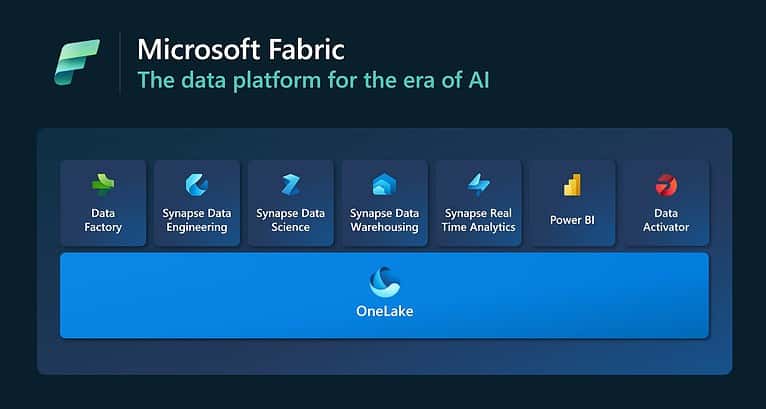That data is becoming increasingly important is something Microsoft also knows. The company hopes to save organizations money, time and effort by offering a new data platform: Microsoft Fabric. It integrates existing solutions from within the MS suite to simplify data analysis.
The platform is in Public Preview for now, although Premium users of Microsoft’s data visualization software Power BI can start using it right away. Starting July 1, all Power BI customers will be able to use Fabric. During Microsoft Build, the Redmond giant provides details about the nature of the new platform.
Workloads
The platform consists of seven core workloads which together should ensure that customers do not need a different vendor for each type of data analysis. First is Data Factory, which offers more than 150 connectors for cloud and on-prem data sources. Within this workload, it is possible to transform the data in question and set up a pipeline.
Synapse Data Engineering then provides authoring capabilities for Apache Spark. There is also Synapse Data Science, which offers an end-to-end workflow for data specialists to build and train AI models, for example, and to collaborate with other developers in doing so. Synapse Data Warehousing promises to offer the fastest SQL performance with open data formats. This is an amalgamation of a lakehouse and data warehouse. As a data platform, Fabric should deviate as little as possible from standard data formats so that users do not have to deal with the infamous “vendor lock-in” where it is too difficult and time-consuming to switch providers again.
Synapse Real-Time Analytics should ensure that semi-structured data from IoT devices, telemetry, logs and more is processed with powerful performance and low latency. Also within the announced workloads is the existing Power BI, which indicates it can find a place under the Fabric hood. Microsoft indicates that it has already tightly integrated it within the 365 suite. Finally, Data Activator is there to monitor data in real-time and detect when certain patterns emerge, without the need for programming experience.
And AI, of course
By now, a new software platform should be expected to have AI integrated, and especially if it involves data processing. The Azure OpenAI Service provides assistance at every layer. As expected, this feature is known as Copilot in Microsoft Fabric. So the efficacy of the platform does not depend on extensive coding experience, although of course that will always come in handy. Those who can at least explain in human language what they are looking for within the data can turn to the Copilot feature that analyzes it for the user. However, this functionality does not yet have a release date, so it will be a while before this AI functionality is available.
A number of large companies intend to use Fabric, including T-Mobile and Aon. People there talk about the benefit of the lack of data silos, or the unwanted splitting of data within an organization. The future will show how Fabric will fare within the crowded data analytics market. In any case, Microsoft’s trump card is its extensive integration with existing 365 services.
Also read: Databricks has built a lakehouse for the manufacturing industry
